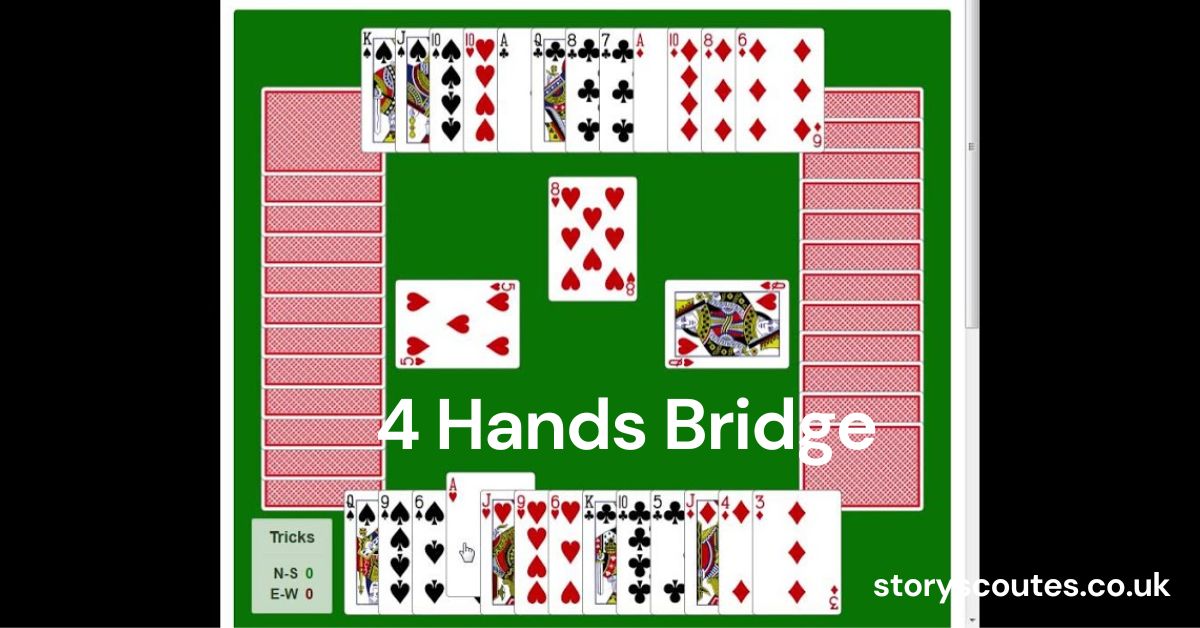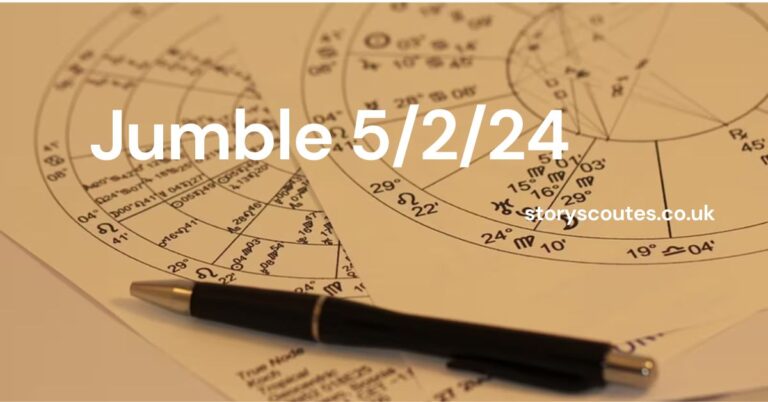4 Hands Bridge: The Ultimate Guide to Mastering the Game
Bridge is a classic card game that has captivated players for generations. Among its many variations, 4 hands bridge stands out as a popular and engaging form of the game. In this comprehensive guide, we’ll explore everything you need to know about 4 hands bridge, from its basics to advanced strategies. Whether you’re a beginner looking to learn or an experienced player aiming to improve your skills, this article has something for everyone.
What is 4 Hands Bridge?
4 hands bridge, also known as rubber bridge or party bridge, is a variation of contract bridge played by four people. It’s called “4 hands” because each player is dealt 13 cards, making up the 52-card deck. This version of bridge is perfect for casual game nights with friends or family, as it allows for a more relaxed and social atmosphere compared to duplicate bridge tournaments.
The Basics of 4 Hands Bridge
Setting Up the Game
To play 4 hands bridge, you’ll need:
- A standard 52-card deck
- Four players
- Paper and pencil for scoring
- A table large enough for comfortable play
Players sit across from their partners, forming two teams: North-South and East-West.
Card Rankings and Suit Hierarchy
In 4 hands bridge, cards are ranked from highest to lowest:
- Ace (highest)
- King
- Queen
- Jack
- 10
- 9
- 8
- 7
- 6
- 5
- 4
- 3
- 2 (lowest)
The suits are also ranked, from highest to lowest:
- Spades (♠)
- Hearts (♥)
- Diamonds (♦)
- Clubs (♣)
Understanding this hierarchy is crucial for bidding and gameplay.
How to Play 4 Hands Bridge
The Dealing Process
- Shuffle the deck thoroughly.
- The dealer distributes 13 cards to each player, one at a time, starting with the player to their left.
- Players arrange their cards by suit and rank.
The Bidding Phase
Bidding is a crucial part of 4 hands bridge. It determines the contract for the hand and which team will be the declarer. Here’s how it works:
- The dealer starts the bidding, followed by each player clockwise.
- Players can pass or make a bid, which consists of a number (1-7) and a suit or “No Trump” (NT).
- Each bid must be higher than the previous bid, either by increasing the number or choosing a higher-ranked suit.
- Bidding continues until three consecutive players pass.
- The highest bid becomes the contract.
Playing the Hand
Once the contract is set, gameplay begins:
- The player to the left of the declarer leads the first card.
- The declarer’s partner (dummy) lays their cards face-up on the table.
- The declarer plays both their hand and the dummy’s hand.
- Players must follow suit if possible; if not, they can play any card.
- The highest card of the led suit wins the trick.
- The winner of each trick leads the next one.
- Play continues until all 13 tricks are completed.
Scoring in 4 Hands Bridge
Scoring in 4 hands bridge can be complex, but here are the basics:
- The declarer’s team scores points for making their contract or more.
- The defending team scores points for defeating the contract.
- Bonus points are awarded for game contracts, slams, and overtricks.
- Penalties are applied for undertricks (failing to make the contract).
Advanced Strategies for 4 Hands Bridge
Effective Bidding Techniques
- Communicate with your partner: Use your bids to convey information about your hand’s strength and distribution.
- Listen to opponents’ bids: Their bids can give you valuable information about their hands.
- Know when to compete: Sometimes, bidding higher can force opponents into a less favorable contract.
- Use conventional bids: Learn and employ standard bidding conventions to exchange more precise information with your partner.
Declarer Play Tactics
- Plan your play: After the dummy is revealed, take time to count your winners and losers.
- Manage your entries: Ensure you can access both hands when needed.
- Consider finessing: Use finesse plays to potentially win tricks with lower-ranked cards.
- Watch for signals: Pay attention to the cards your opponents play for clues about their hands.
Defensive Strategies
- Lead wisely: Choose your opening lead carefully based on your hand and the bidding.
- Signal to your partner: Use standard signals to communicate information about your hand.
- Count the declarer’s tricks: Keep track of how many tricks the declarer needs and has won.
- Protect your honors: Don’t lead away from honor cards unless necessary.
Common Mistakes to Avoid in 4 Hands Bridge
- Overbidding: Don’t get caught up in the excitement and bid beyond your hand’s capabilities.
- Ignoring partner’s signals: Pay attention to the cards your partner plays; they’re trying to communicate.
- Failing to plan: Take time to strategize before playing the first card.
- Neglecting to count: Always keep track of the cards played and remaining.
- Playing too quickly: Rushing can lead to careless mistakes. Take your time and think through each play.
The Social Aspect of 4 Hands Bridge
One of the most appealing aspects of 4 hands bridge is its social nature. Unlike more competitive forms of bridge, this variation allows for a more relaxed atmosphere. Here are some tips to enhance the social experience:
- Rotate partners: If playing with a group, consider changing partners every few hands to mix things up.
- Keep conversation light: While focus is important, remember that 4 hands bridge is meant to be enjoyable.
- Be patient with beginners: If playing with newcomers, take time to explain concepts and strategies.
- Host bridge nights: Organize regular game nights to build a community of bridge enthusiasts.
Improving Your 4 Hands Bridge Skills
To become a better 4 hands bridge player, consider these tips:
- Practice regularly: The more you play, the better you’ll become.
- Study bridge books: There are many excellent resources available for players of all levels.
- Play online: Many websites offer opportunities to play 4 hands bridge against opponents worldwide.
- Join a club: Local bridge clubs often offer lessons and casual play opportunities.
- Analyze your games: After each session, review your plays and discuss strategies with your partner.
The History and Evolution of 4 Hands Bridge
4 hands bridge, like other forms of bridge, has a rich history dating back to the late 19th century. It evolved from earlier trick-taking games such as whist. The modern form of contract bridge, including 4 hands bridge, was developed in the 1920s and quickly gained popularity worldwide.
Over the years, bidding systems and conventions have become more sophisticated, but the core gameplay remains largely unchanged. Today, 4 hands bridge continues to be a beloved pastime for millions of players around the globe.
The Future of 4 Hands Bridge
As we look to the future, 4 hands bridge faces both challenges and opportunities:
- Digital adaptation: Online platforms are making the game more accessible to new players.
- Youth engagement: Efforts are being made to introduce bridge to younger generations.
- Simplified versions: Some variants aim to make the game easier for beginners to learn.
- AI opponents: Artificial intelligence is being developed to provide challenging computer opponents.
Despite these changes, the core appeal of 4 hands bridge – its blend of strategy, partnership, and social interaction – remains as strong as ever.
Conclusion
4 hands bridge offers a unique combination of mental challenge, social interaction, and competitive spirit. Whether you’re a seasoned player or a curious beginner, this classic card game has something to offer everyone. By understanding the rules, developing your skills, and embracing the social aspects of the game, you can enjoy countless hours of engaging gameplay with friends and family.
So gather your cards, find your partners, and dive into the fascinating world of 4 hands bridge. With practice and patience, you’ll soon discover why this timeless game has captivated players for generations.
Frequently Asked Questions
How long does a typical game of 4 hands bridge take?
A single hand of 4 hands bridge usually takes about 5-10 minutes. A full rubber (two games won by the same team) can take anywhere from 30 minutes to an hour, depending on the players’ skill levels and the complexity of the hands.
Can I play 4 hands bridge with fewer than four people?
While 4 hands bridge is designed for four players, you can adapt it for three players using a “dummy” hand. However, the dynamics of the game change significantly, and it’s generally more enjoyable with a full set of four players.
Is 4 hands bridge difficult to learn?
The basics of 4 hands bridge can be learned relatively quickly, but mastering the game takes time and practice. Many find the bidding phase to be the most challenging aspect to learn initially.
How is 4 hands bridge different from duplicate bridge?
The main difference is in scoring and competition structure. 4 hands bridge is typically played casually, with scores accumulating over multiple hands. Duplicate bridge is more competitive, with multiple tables playing the same hands for direct comparison.
Are there any age restrictions for playing 4 hands bridge?
There are no official age restrictions for 4 hands bridge. However, the game requires strategic thinking and memory skills, so it’s generally more suitable for older children, teenagers, and adults.
Can I play 4 hands bridge online?
Yes, there are several websites and apps that offer 4 hands bridge games. These platforms allow you to play against computer opponents or other players from around the world.
What’s the best way to practice 4 hands bridge?
A: Regular play is the best practice. You can also study bridge books, solve bridge problems, and analyze hands from expert games. Many local clubs offer practice sessions and lessons for players of all levels.
Is there a professional circuit for 4 hands bridge?
While there are professional tournaments for contract bridge, they typically use the duplicate bridge format. 4 hands bridge is generally played more casually and doesn’t have a professional circuit.
How many points do I need to open the bidding in 4 hands bridge?
The general rule is to have at least 12 high card points (HCP) to open the bidding. However, this can vary depending on the specific bidding system you’re using and the distribution of your hand.
Can I use bidding boxes in 4 hands bridge?
While bidding boxes are more commonly used in duplicate bridge, there’s no rule against using them in 4 hands bridge. They can add a level of formality to the game and help prevent accidentally exposing information through vocal inflections.






